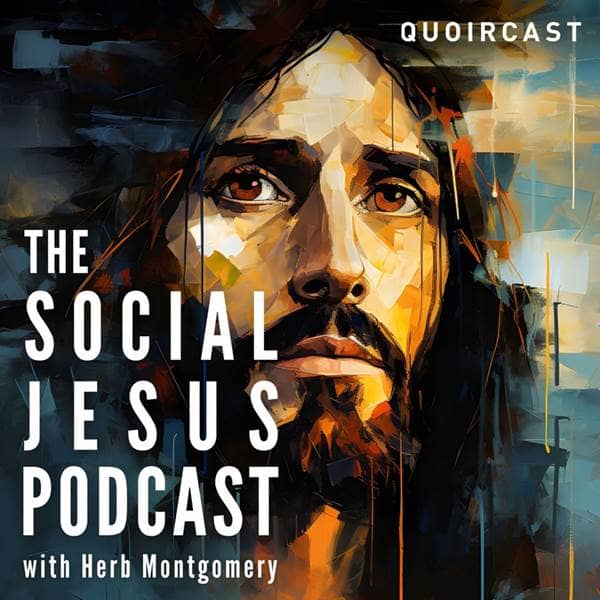
One Christian physicist, responding to the question as to the age of the earth, explained the traditional view as follows: “Concerning the age of the Earth, the Bible’s genealogical records combined with the Genesis 1 account of creation are used to estimate an age for the Earth and universe of about 6000 years, with a bit of uncertainty on the completeness of the genealogical records, allowing for a few thousand years more.” In other words, our physicists suggests that many understand the Bible to be suggesting that the earth is somewhere between six and nine thousand years old. This probably does accurately capture the assumption of many readers of the Bible.
It is important to understand, however, that assumptions such as the one above are exactly that—assumptions! The Bible actually never states hold old the earth is. Thus, while some readers—believers and non-believers alike—have tried to use that religious text to ascertain the age of the earth, one can do no more than guess the age of the earth based on what “evidence” the Bible offers. As one source points out: “The question of the age of the earth has produced heated discussions on internet debate boards, TV, radio, in classrooms, and in many churches, Christian colleges, and seminaries.” There are several factors that must be taken into consideration when contemplating the age of the earth based solely on what the Bible says.
The Symbolism
So much of what the Bible talks about is symbolic. Some of those symbols are obviously not meant to be taken literally. For example, John calls Jesus “the Lamb of God” (John 1:29). No one thinks Jesus is literally a lamb. Other symbols are perhaps a little less obvious but, if one is attentive, the metaphorical nature of the passage seems evident. For example, when Abraham offered up his son, Isaac, most Christians see that as a type—a symbol which foreshadows a future event. In this case, the event typified is traditionally understood to be the Father offering up His Only Begotten Son, Jesus Christ. The literalness of other symbols is sometimes debated. For example, when—during the Last Supper—Jesus broke bread and distributed that (along with wine) to His apostles, how literal did He intend these words? “Jesus took bread, and when he had given thanks, he broke it and gave it to his disciples, saying, ‘Take and eat; this is my body.’ Then he took a cup, and when he had given thanks, he gave it to them, saying, ‘Drink from it, all of you. This is my blood…which is poured out for many for the forgiveness of sins.’” (Matthew 26:26-28) While it seems evident that there are some symbolic elements in this passage, some Christians take these verses as quite literal (introducing the Roman Catholic doctrine of Transubstantiation), while others (like low-Church Protestants) see the passage as introducing the Sacrament of the Lord’s Supper, but in symbolic language that is not intended to be taken literally. Then again, there are other passages of scripture which might be intended as symbolic, but which are seldom read that way. As a singular example, what about the “seven days” discussed in the creation account (Genesis 1:1-2:3)? Were they literal 24-hour days? Did “days” even exist at the beginning of the creation account? (Genesis 1:14-19 suggests not.) Could those “seven days” be intended symbolically and, if they were, then wouldn’t that significantly change traditional calculations of the age of the earth?
The Creation
The number seven in Hebrew caries a standard symbolic meaning of “wholeness” or “completion”—in addition to the idea of “perfection.” Thus, when God speaks of “finishing” His creative work in “seven” days, the implication is that—after a series of creative events—the earth was “complete,” “wholly” prepared for God’s work to move forward upon the face of it.
Also, the word “day” (used in the Genesis account) can mean (in Hebrew) a “time,” a “year,” a general “period,” or a literal 24-hour “day.” If a symbolic read is appropriate, then could the biblical “days” mentioned in the creation account be longer than 24-hours? For example, 2 Peter 3:8 warns us, “be not ignorant of this one thing, beloved, that one day is with the Lord as a thousand years, and a thousand years as one day.” (See also Psalms 90:4) If the equating of 1,000 years in our time to 1 “day” in God’s time applies to the creation account, one would need to immediately add 7,000 years to the age of the earth.
Perhaps 7,000 years is still too little to add, based on a scientific reading. In his book, The Science of God—The Convergence of Scientific and Biblical Wisdom, Dr. Gerald Schroeder—a “distinguished physicist and Biblical scholar”—examines whether science and the Bible are really at odds. “Schroeder demonstrates the surprising parallels between a variety of Biblical teachings and the findings of biochemists, paleontologists, astrophysicists, and quantum physicists… [He] argues that the latest science and a close reading of the Bible are not just compatible but interdependent.” Schroeder uses the Genesis creation account as his template and shows that nearly everything Genesis says about the creation matches what the so called “big-bang theory” says about the creation of the universe—which would mean that the early is much older than some traditionally assume. In Schroeder’s view, Genesis has more right than wrong—and even the order of what was created and when Genesis gets right! (E.g., Genesis 1:20 describes God bringing forth “life” from “the waters” before any other life is brought forth. Could Moses actually be seeing the evolutionary process here? And, if so, doesn’t that mean that the earth is billions of years, rather than thousands of years, old?) Schroeder argues that God is a scientist who created the universe in a scientific manner, and that there is no conflict between the science of creation and the biblical account of those same events. The only problem Schroeder sees is when scientists and believing Christians insist on reading everything literally.
One can freely reject a symbolic interpretation; and doing so is fine. But it is also a legitimate way to look at the creation narrative, which is—after all—the telling of a story, as Moses (who was not there for the actual creation) is relating to the reader. And, if one accepts that the “seven days” timeframe might be symbolic, that opens the door for more questions about the age of the earth—and allows for the possibility of a harmony between science and scripture.
The Genealogies
Genealogies are frequently given in the Bible. In Genesis chapter 4, Cain’s pedigree is listed. In Genesis chapter 5, Seth’s lineage is given. When combined, Genesis 4-5 & 11 report the names of the men from Adam to Abraham. In Genesis 10, the male descendants of Noah are listed. In one of the most famous genealogies, Luke 3 traces Jesus’s lineage all the way back to Adam:
“Now Jesus…was the son, so it was thought, of Joseph,
the son of Heli, the son of Matthat,
the son of Levi, the son of Melki,
the son of Jannai, the son of Joseph,
the son of Mattathias, the son of Amos,
the son of Nahum, the son of Esli,
the son of Naggai, the son of Maath,
the son of Mattathias, the son of Semein,
the son of Josek, the son of Joda,
the son of Joanan, the son of Rhesa,
the son of Zerubbabel, the son of Shealtiel,
the son of Neri, the son of Melki,
the son of Addi, the son of Cosam,
the son of Elmadam, the son of Er,
the son of Joshua, the son of Eliezer,
the son of Jorim, the son of Matthat,
the son of Levi, the son of Simeon,
the son of Judah, the son of Joseph,
the son of Jonam, the son of Eliakim,
the son of Melea, the son of Menna,
the son of Mattatha, the son of Nathan,
the son of David, the son of Jesse,
the son of Obed, the son of Boaz,
the son of Salmon, the son of Nahshon,
the son of Amminadab, the son of Ram,
the son of Hezron, the son of Perez,
the son of Judah, the son of Jacob,
the son of Isaac, the son of Abraham,
the son of Terah, the son of Nahor,
the son of Serug, the son of Reu,
the son of Peleg, the son of Eber,
the son of Shelah, the son of Cainan,
the son of Arphaxad, the son of Shem,
the son of Noah, the son of Lamech,
the son of Methuselah, the son of Enoch,
the son of Jared, the son of Mahalalel,
the son of Kenan, the son of Enosh,
the son of Seth, the son of Adam,
the son of God.” (Luke 3:23-38)
Luke lists 42 generations between Adam and Jesus. The average generation is typically estimated to be about 25 years. If you calculate these 42 generations at 25 years each, you only have 1,050 years between Jesus and Adam. Of course, the generations from Adam to at least Methuselah were much longer—with many individuals having children when they were around 100 years of age. Knowing that the longevity and the belated age for siring offspring tapers off after the flood, if we estimate that the length of an average generation during the years between Adam and Jesus was around 50 years, then the length of time between those two biblical figures would still only be 2,100 years—which is about half of what many readers of the Bible estimate.
Most scholars and genealogists assume that pedigrees given in the Bible—such as the one given for Jesus, tracing his line all the way back to Adam—do not contain the name of every male in the line of descent. They are only summaries or approximate lists, leaving out an unknown number of individuals. Thus, one source points out:
“Biblical genealogies must be understood in the context of the ancient Near East… Shortening genealogies by omitting names was commonplace. Matthew’s genealogy of Jesus exhibits a pattern in which three sets of 14 generations are achieved (Matt. 1:17). The number 14 was desirable because of the importance attributed to the symbolic meaning of seven (‘complete, perfect’). Thus ‘Joram fathered Uzziah’ (Matt. 1:8) omits three generations (2 Chron. 21:4–26:33) so as to accomplish the desired number (see Ezra 7:1-5 with 1 Chron. 6). From this example, we discover another unexpected feature of biblical genealogies. Genetic terms, such as ‘son of’ and ‘father,’ were flexible in meaning, sometimes indicating a ‘descendant' and ‘grandfather’ or ‘forefather.’… Moreover, scholars often assume that persons named in genealogies are metaphors for tribes and actually have no familial connection… A special problem is the long life spans in Genesis 5:1-32. In that passage, for example, Adam is said to have lived to be 930 years old… The life spans before Noah’s flood were longer and afterward gradually decreased. The long lives of the patriarchs, such as Adam and Noah, shrink to moderate figures when compared to the Sumerian King List. A significant difference is that Adam’s genealogy is not for political purposes but instead shows that the descending ages of humanity were due to a moral factor when God judged a corrupt humanity (Gen. 6:1-8). …[The biblical] genealogy cannot be used to reconstruct the age of the earth. Genesis does not present genealogies for establishing absolute chronology (see 1 Kings 6:1).”
In other words, the genealogical lists in the Bible are not given for the purpose of trying to list all humans who lived during the span of that book of scripture. Thus, using those genealogies to calculate the age of the earth will only lead one to an inaccurate conclusion.
Setting aside any discussion about what science says on this matter, the frank reality is, the Bible simply never says how old the earth is, nor does it really give any helpful clues that would enable one to “guestimate” with any measure of accuracy how old the earth is. For the Bible, this is a non-issue and, thus, the question simply never comes up in the text. Common estimates based on various things found in the Bible consistently neglect certain symbolic elements within the text, make assumptions that are often unwarranted, and lead to conclusions which are nothing shy of unreliable.
In the end, the answer to the question “How old is the earth according to the Bible?” doesn’t really matter when one considers the propose of the Bible—which is to convey a spiritual message, not to focus on science or history. As one article on our website notes, one is welcome to take a “young earth” or “old earth” position. The Bible doesn’t forbid the reader from embracing either of those views. However, whichever position one takes, one should not attribute to the Bible what the Bible does not actually say. We create “a serious problem when” our reading of the Bible “distorts and defines scripture rather than letting scripture speak for itself.”
5/14/2024 8:44:52 PM










